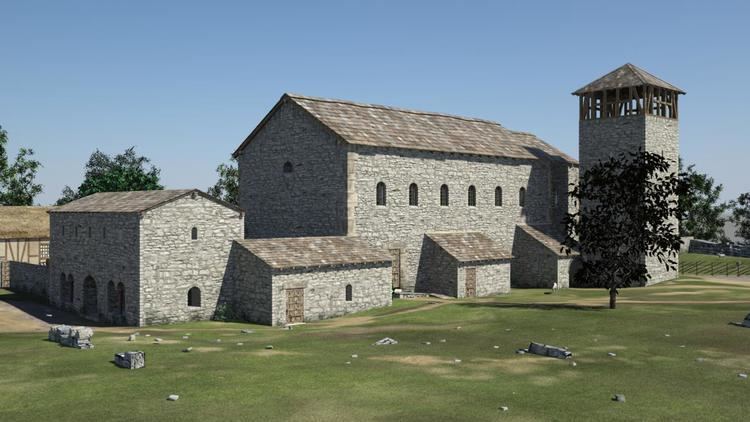Capital Niedermünster Abbey Historical era Middle Ages Preceded by Succeeded by Founded 1002 | Government Principality First religious
community founded 788 Today part of Germany | |
 | ||
The Niedermünster or Niedermünster Abbey (German: Reichsstift Niedermünster), Regensburg, was a house of canonesses (Frauenstift) in Regensburg, Bavaria, Germany. At the height of its power it was one of the wealthiest and most influential in Bavaria. The church is still in use as the parish church of Regensburg Cathedral.
History
This women's religious community, dedicated to Saint Erhard of Regensburg at its founding and later to the Assumption of the Virgin Mary as well, was recorded for the first time in about 889. However, the first church, if the traditional foundation by the seventh-century Saint Erhard is credited, would have already existed by about 700, and a religious community had been founded by 788 by Tassilo III, Duke of Bavaria. The foundation tradition also credits Saint Erhard with the foundation of a nunnery here. It is not clear in fact whether at first the community was for men or for women, but it soon developed into one of the most important women's religious houses in Germany.
The church was entirely rebuilt on a grand scale by Henry I, Duke of Bavaria, in about 950. Henry was buried here and his widow Judith, who by virtue of her and her husband's generous endowment of the community, is counted as the founder, took the veil here, became abbess and was herself buried here in 990.
This close connection with the ruling and Imperial Ottonian house made Niedermünster powerful and wealthy. The treasures of Niedermünster include the Rule of about 990 and the Uta Codex or Evangeliary of about 1025 with its casket of chased gold, commissioned by an abbess of Niedermünster and containing an illumination showing Saint Erhard presiding at Mass. There is also the magnificent cross given by Queen Gisela, daughter of Henry II, Duke of Bavaria, and wife of King Stephen I of Hungary, for the tomb of her mother, Duchess Gisela of Bavaria, who was buried here in 1006.
In 1002 Emperor Henry II, son of Henry II, Duke of Bavaria, granted the community Reichsfreiheit (territorial and judicial independence of all save the Emperor) and it became an Imperial abbey, or Reichsstift.
Emperor Henry II later favoured his own foundation of Bamberg Cathedral over Niedermünster, which accordingly lost prominence and influence.
The present Romanesque church was constructed after a fire in 1152 destroyed the previous one. The crypt of Saint Erhard remains from earlier buildings, however.
In the 17th and 18th centuries the church was modernised, although very modestly, and fitted out with some important works of art, including a monumental bronze crucifix and a sorrowing Mary Magdalene by Georg Petel. The silver shrine of the relics of Saint Erhard dates from the 19th century.
The community was dissolved in 1803 during the secularisation of Bavaria. From 1820 the premises were partly rented out. In 1821 the Bishop of Regensburg was given rooms here for his residence, and the episcopal offices were also transferred here. Also in 1821 the former canonry church took over from St. Ulrich's the role of cathedral parish church.
During excavations the foundations of Roman military buildings and predecessors of the church were uncovered. These may be seen only on guided tours, but it is planned to make these unique and well-preserved discoveries more accessible to the public.
Burials in Niedermünster include:
